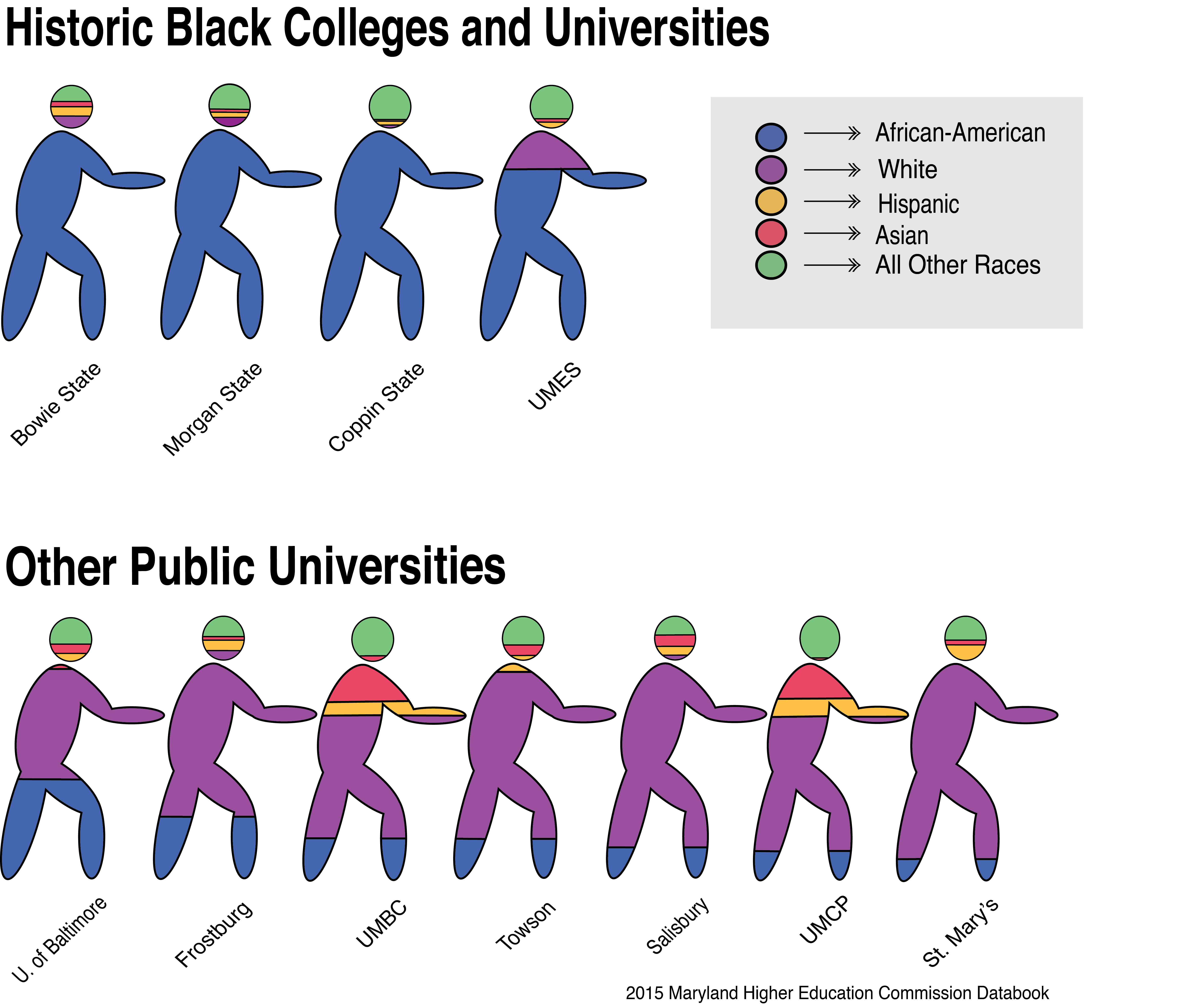Historically black colleges and universities in Maryland are more segregated than the other public colleges and universities in the state. In 2015, African-Americans made up over 80 percent of the total population at Coppin State, Bowie State and Morgan State. UMES, the state's other HBCU, was more diverse, with African-Americans making up 67 percent of the student body.
Racial Makeup of Student Body
Nearly 90 percent of students who attend a HBCU in Maryland come from Maryland -- and roughly three-quarters of those students come from Prince George's County, Baltimore City and Baltimore County. In 2015, high school students from Baltimore City and Prince George's County scored well below the state average on the High School Assessments, while Baltimore County students scored right around the state average.
Percentage of In-State Students Enrolled In HBCUs From Each County
Source: Maryland Higher Education Commission Enrollment By Place of Residence, Fall 2013, 2015 Maryland Report Card
Incoming freshmen at HBCUs tend to have lower GPAs than students at other Maryland schools. Bowie State, Coppin State and UMES had the three lowest average GPAs for incoming freshmen in the class of 2020. At all four historically black schools, the average GPA for incoming freshmen was below the state average. University of Maryland - College Park had the highest average GPA for incoming freshmen, 4.2.
Incoming freshmen at HBCUs also have lower SAT scores than students at other schools in Maryland. At all four HBCUs, they have an average SAT score of less than 900 - lower than the national average of 1010 and lower than the state average of 987.
Bowie State, Coppin State, UMES and Morgan State have the highest percentage of students receiving Pell Grants in the state. The grants help low-income students pay for college. Lower-income students are more likely to drop out of college for financial reasons than wealthier students.
At Maryland's four HBCUs, at least three out of every 10 freshman do not return for their sophomore year. Compare that to the University of Maryland, College Park, where only one out of 20 students leaves after their first year.
Advocates for HBCUs have argued that the schools are underfunded, a concern that was raised in the HBCU lawsuit brought against the state of Maryland in 2006. In 2016, Morgan State, Coppin State and UMES all have more operating budget funding per student than the state average at public universities. Despite their relatively high (or at least comparable) operating budgets, freshmen retention and graduation rates remain low.
